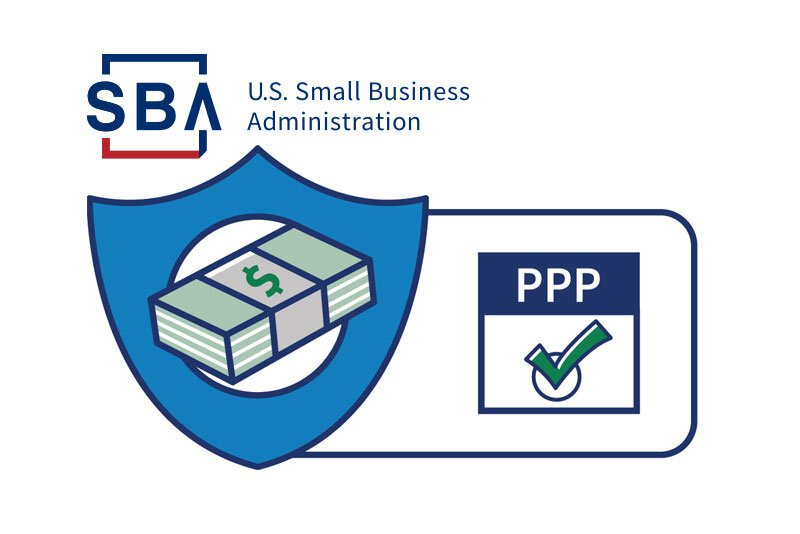To help small businesses keep their business going and their staff employed, the federal government passed the CARES Act, which is administered by the Small Business Administration (SBA). One of the most useful parts of the CARES Act is the Paycheck Protection Program (PPP) loan, which encourages small business owners to keep their employees on the payroll.
Under the program, the loans will be forgiven if the business only uses the money for payroll, rent, mortgage interest and utilities. Businesses must keep paying their employees for eight weeks.
The PPP loans are 2.5 times a company’s average monthly payroll, however, it remains to be seen if two months is long enough to cover the financial distress small businesses are experiencing. Sounds good, but many small business owners are confused about how to actually calculate how much money their businesses are expected to receive.
Here’s How PPP Loans are Calculated
Businesses apply for PPP loans through an SBA-approved lender, but it is up to the borrower to calculate the amount of the loan. Because the purpose of the loan is to retain workers during the coronavirus crisis, the amount is based on the average monthly costs of payroll expenses including the salaries of the business owners, the employees and other payroll costs such as health and retirement benefits.
Some payroll cost variables include:
- Your business entity and how you pay your business taxes
- Number of W2 employees
- Benefits the business pays, such as health insurance, retirement contributions, vacation pay, sick pay and any severance payments.
- Start date of business and/or income
- Maximum salary of $100,000 per employee
- Owner draws do not count as payroll
- Dividends paid to shareholders do not count a payroll
Let’s Get into the Nitty-gritty by Entity Type
Independent Contractor
Where to get the payroll information:
- Gather data from each 1099 you received in 2019 and reported on 2019 1099-MISC forms. This is the amount you paid self-employment taxes on.
- If you received income before June 30, 2019, divide the 1099 income paid by 12.
- If you didn’t receive income until after June 30, 2019, you can still divide income paid by 12, or you can choose to use income made from January to February 2020 and divide by 2. Choose the higher amount.
Step-by-step example:
- Add up the totals of all your 2019 1099s, let’s say $45,000
- Divide by 12 = $3,750 This is the amount you enter for Monthly Average Payroll on the application.
- Multiply by 2.5 = $9,375 This is the amount you enter under Loan Request.
Sole Proprietorship
Where to get the payroll information:
- You need your 2019 net profit, as self-employment taxes are based on the business’s net profit only. You can find this amount on your 2019 income statement or Schedule C, line 31.
- If you have W2 employees, you also include all employee wages, commissions, tips, and all payroll taxes. Remember, you and each employee are capped at $100,000.
Step-by-step example:
If you received income and paid wages before June 30, 2019, divide the amount by 12. If you didn’t receive income or pay wages until after June 30, 2019, you can still divide that amount by by 12, or you can choose to use net profits from January to February 2020 and divide by 2. Choose the higher amount. Single-member LLCs are considered sole proprietors.
Example 1: Started receiving net profits, May 2019.
- Amount from May 2019-December 2019 is $48,000
- Divide by 12 = $4,000 Monthly Average Payroll
- Multiply by 2.5 = $10,000 Loan Request
Example 2: Did not start receiving net profits until September 2019, so you can use net profits from January to February 2020.
- Payroll costs are $12,000
- Divide by 2 = $6,000 Monthly Average Payroll
- Multiply by 2.5 = $15,000 Loan Request
Partnership
Where to get the payroll information:
- Partnerships, and multi-member LLCs that file taxes as partnerships, will use numbers from Tax Form 1065 or each partners’ Schedule K-1, line 14.
- If you have W2 employees, you should also include all employee wages, commissions, tips, and all payroll taxes. Remember, you and each employee are capped at $100,000.
Step-by-step example:
- Add together each partner’s 2019 Schedule K-1 self-employment income. Let’s say a total of $180,000.
- Divide by 12 = $15,000 Monthly Average Payroll
- Multiply by 2.5 = $37,500 Loan Request
S Corporations
As an S Corp, your business elects to have its profits and losses flow through to its shareholders (owners), who then report them on their personal income tax returns. If your S Corp does not pay salaries through payroll and therefore does not pay employment taxes, your business is not eligible for the PPP loan. Also, shareholder distributions are not considered payroll, because again even though the shareholder pays income taxes on the amount distributed, no payroll taxes have been paid.
Where to get the payroll information:
- If you use a payroll service to pay yourself and your employees, you can get a report for 2019 from your payroll provider.
- If you have W2 employees, you should also include all employee wages, commissions, tips, and all payroll taxes. Remember, you and each employee are capped at $100,000.
Step-by-step example:
- Take total payroll costs for 2019, let’s say $120,000
- Divide by 12 = $10,000 Monthly Average Payroll
- Multiply by 2.5 = $25,000 Loan Request
C Corporation
Where to get the payroll information:
- As a C Corp, you are considered an employee of the corporation, along with your employees. Owner draws and shareholder dividends and loans to shareholders do not count as payroll monies and cannot be calculated in your costs. You can use your 2019 Tax Form 940 for totals or ask your payroll provider to give you the statement.
- If you have W2 employees, you should also include all employee wages, commissions, tips, and all payroll taxes. Remember, you and each employee are capped at $100,000.
Step-by-step example:
- Take total payroll costs for 2019, let’s say $240,000.
- Divide by 12 = $20,000 Monthly Average Payroll.
- Multiply by 2.5 = $50,000 Loan Request.
In All the Scenarios
- If you started your business or received income before June 30, 2019, you must divide the amount by 12.
- If you didn’t start your business or receive income until after June 30, 2019, you can still divide the amount by 12, or you can choose to use the amount from January to February 2020 and divide by 2.
- You can choose the amount that is most beneficial for you.
- As long as you use 75 percent of the loan for payroll and the remaining 25 percent for rent, utilities and mortgage interest, you are eligible for loan forgiveness.
CorpNet Is Here to Help
CorpNet remains open and in full operation Monday through Friday from 7 a.m. until 5:00 p.m. PST to help. Our team is safely self-distanced and set up to work remotely with all of the necessary tools and resources to serve you. Contact us today at 1-888-449-2638 to discuss how we can help you.





